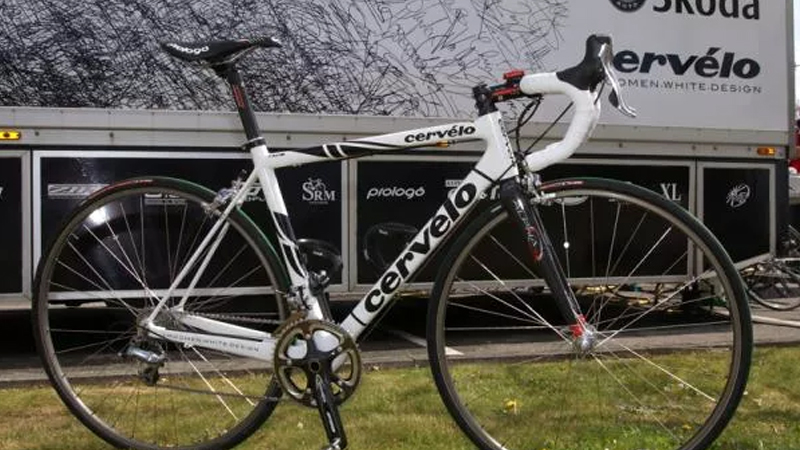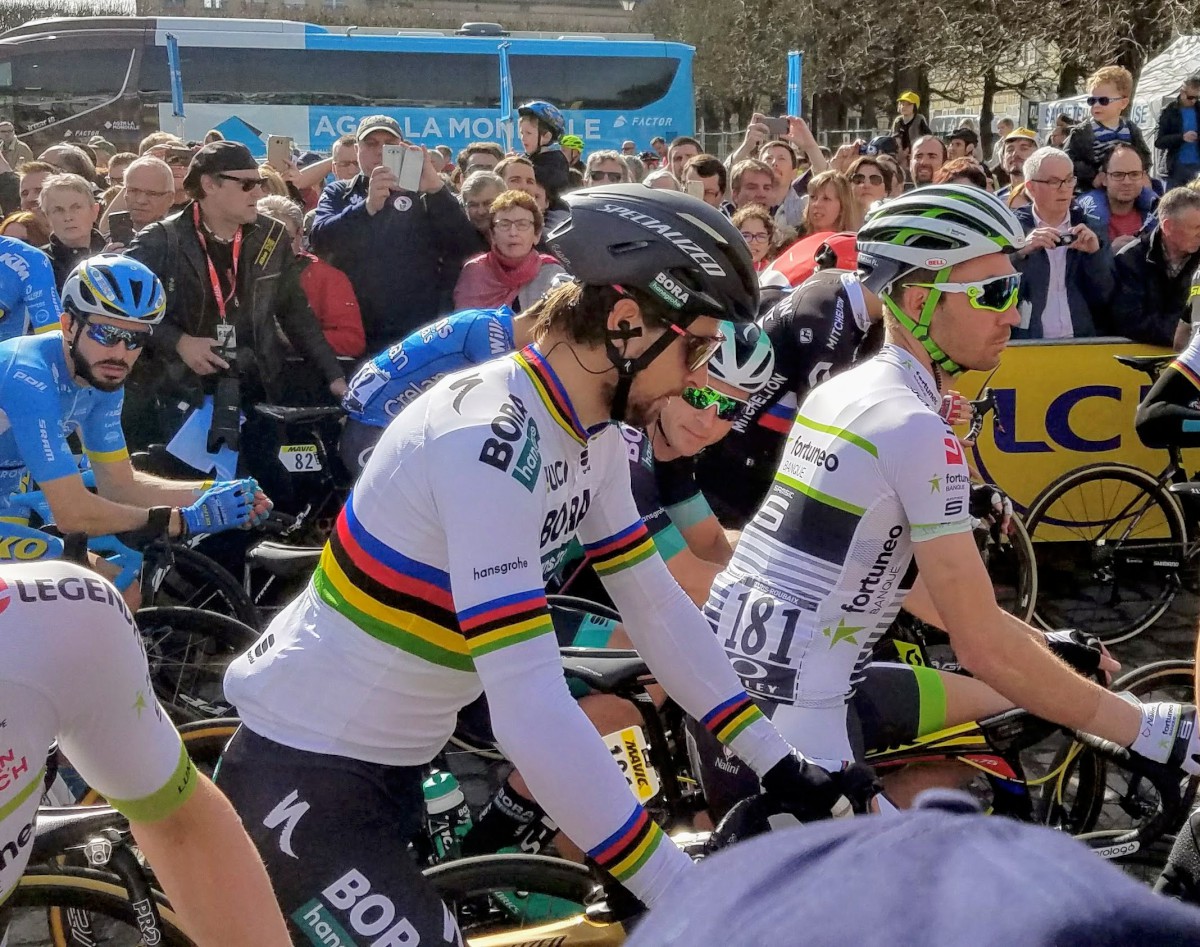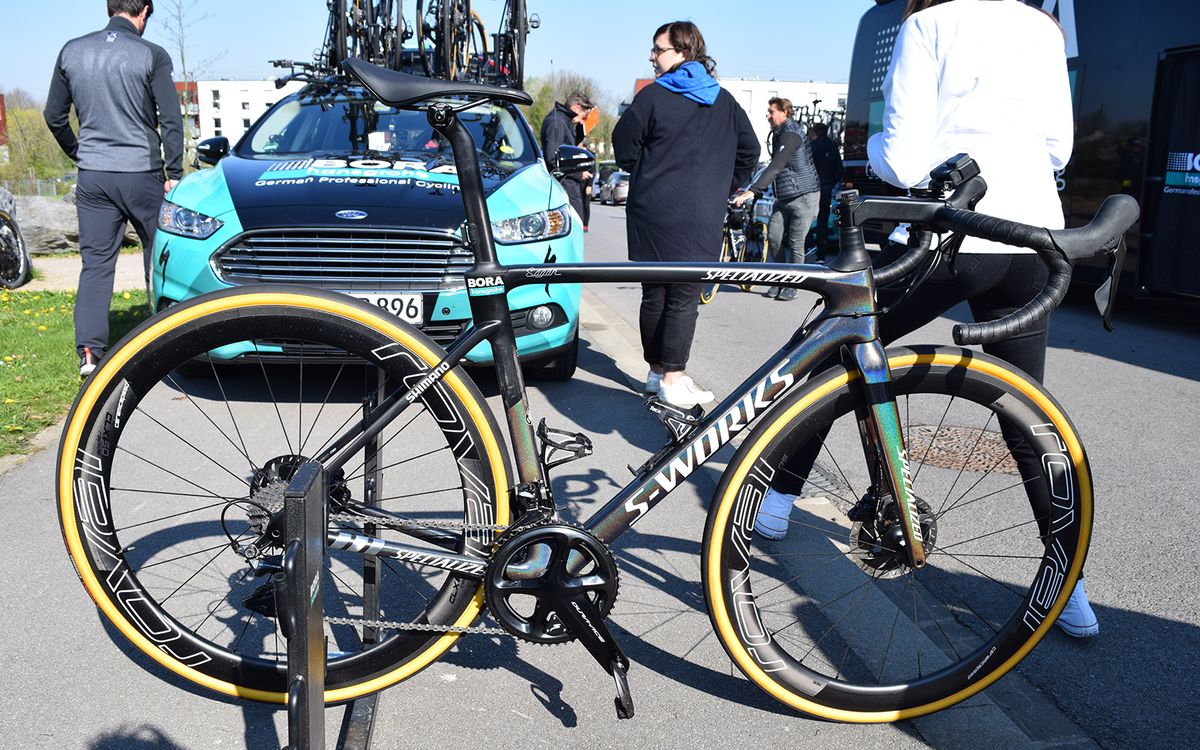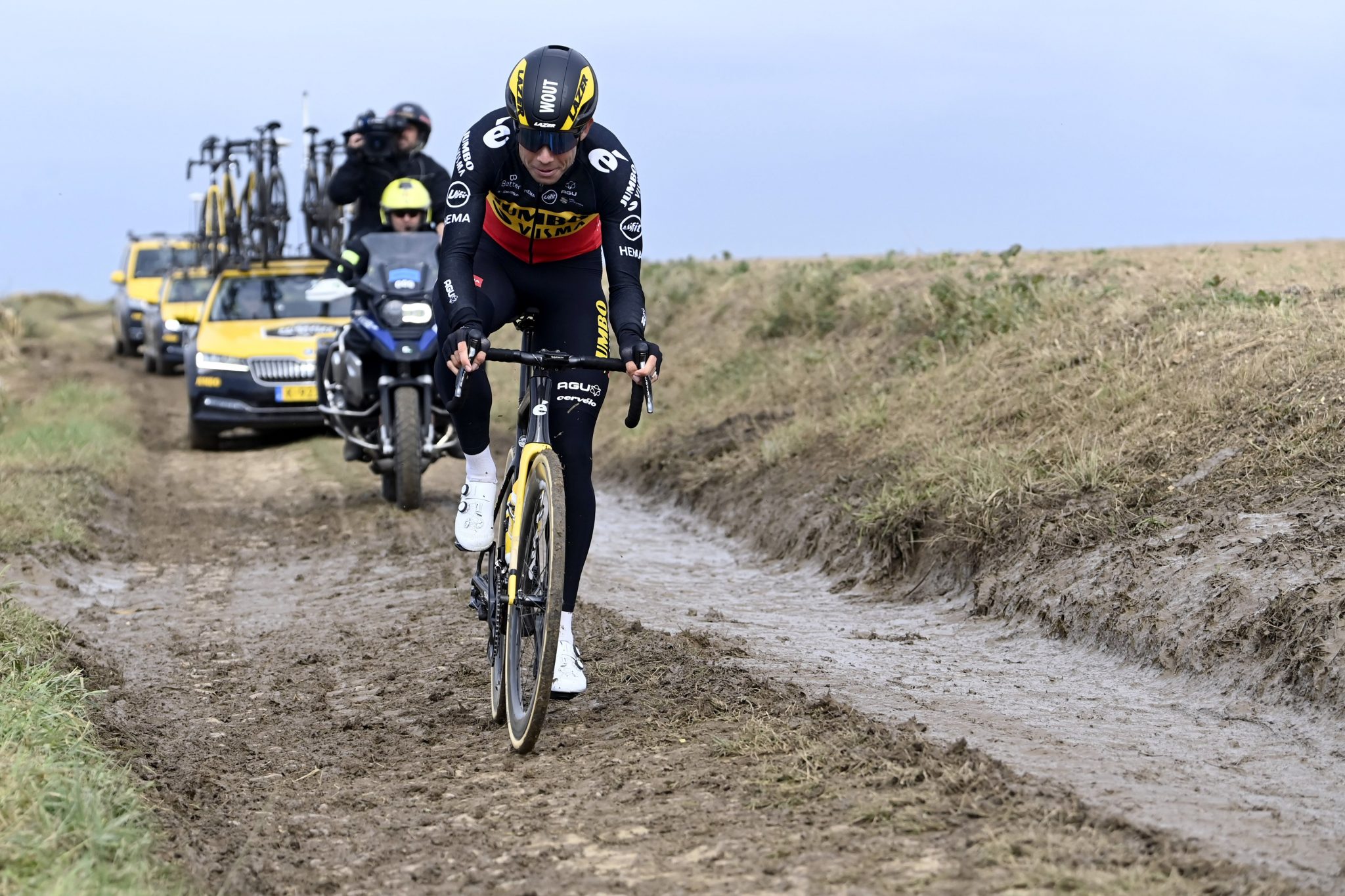What Makes a Bike Paris Roubaix-Ready?
The Paris Roubaix, one of the most iconic and demanding races in professional cycling, pushes both riders and bikes to their limits. The 2024 edition promises to be just as thrilling, with top riders and teams vying for victory on the treacherous cobblestone roads of northern France. The bikes of Paris Roubaix 2024 must be specifically designed to tackle the unique demands of this grueling event. The Paris Roubaix course features over 50 kilometers of cobblestone sections, which can be brutal on both riders and bikes. To succeed, a bike must be able to absorb the relentless pounding of the cobbles, while also providing the speed and agility needed to stay ahead of the competition. This requires a delicate balance of frame design, component choice, and rider setup. Bike design and technology play a crucial role in a rider’s success, as they can significantly impact a rider’s comfort, speed, and overall performance.
How to Choose the Perfect Bike for the Queen of the Classics
Selecting the right bike for the Paris Roubaix is a crucial decision, as it can make all the difference in a rider’s performance. With the bikes of Paris Roubaix 2024 pushing the boundaries of innovation and technology, it’s essential to consider several key factors when choosing a bike for this iconic race. First and foremost, frame material plays a critical role in absorbing the shock and vibrations of the cobblestone sections. Carbon fiber frames are a popular choice, offering a perfect blend of comfort, stiffness, and weight savings. However, some riders may prefer the added comfort and compliance of titanium or steel frames. Geometry is another critical aspect, as a bike’s handling and stability can greatly impact a rider’s confidence and speed on the cobbles. A slack head tube angle and a lower bottom bracket height can provide added stability, while a shorter wheelbase can improve agility and maneuverability. Component choice is also vital, with riders opting for wide, high-volume tires and specialized wheels designed to tackle the harsh conditions of the Paris Roubaix. By carefully considering these factors, riders can choose a bike that perfectly suits their needs and sets them up for success in the Queen of the Classics.
Trek, Specialized, and More: The Bikes of Paris Roubaix 2024
The bikes of Paris Roubaix 2024 are a testament to the innovative spirit of the cycling industry. Top teams and riders have carefully selected their machines, each featuring unique technologies and designs tailored to tackle the infamous cobblestone sections. Trek’s Domane, for instance, boasts a proprietary IsoSpeed decoupler, which allows the seatpost to flex and absorb vibrations, providing a smoother ride on the cobbles. Specialized’s Roubaix, on the other hand, features a futuristic-looking Future Shock suspension system, designed to reduce fatigue and improve control on the rough roads. Other prominent brands, such as Cannondale, Giant, and BMC, have also developed bespoke bikes for the Queen of the Classics, each with their own innovative solutions to the challenges of Paris Roubaix. From advanced materials and aerodynamic shapes to clever component choices and clever suspension systems, the bikes of Paris Roubaix 2024 are a true marvel of modern cycling technology. By examining these machines, we can gain a deeper understanding of the intricate relationship between bike design, rider performance, and success in the world’s most demanding one-day race.
The Evolution of Paris Roubaix Bikes: A Look Back
The Paris Roubaix, also known as the “Hell of the North,” is a grueling one-day cycling race that pushes riders and their bikes to the limit. The race’s infamous cobblestone sections, which account for over 50 kilometers of the 257-kilometer course, demand a unique set of bike design and technological features. Over the years, bike manufacturers have responded to the challenges of Paris Roubaix by innovating and adapting their designs to meet the specific demands of the race.
In the early days of Paris Roubaix, riders competed on heavy, rigid steel frames with minimal suspension and narrow tires. These bikes were ill-suited to the brutal conditions of the cobbles, making the race a true test of endurance and bike-handling skills. As the sport evolved, so did the bikes. The introduction of aluminum and carbon fiber frames in the 1980s and 1990s brought significant weight reductions and improved stiffness, allowing riders to tackle the cobbles with greater speed and control.
The 2000s saw the widespread adoption of specialized Paris Roubaix bikes, designed specifically to absorb the shock and vibrations of the cobbles. These bikes featured longer wheelbases, slacker head angles, and increased tire clearance to accommodate wider, more cushioned tires. The introduction of disc brakes in the 2010s further improved bike control and safety on the treacherous cobblestone sections.
Today, the bikes of Paris Roubaix 2024 represent the pinnacle of cycling technology, with advanced materials, sophisticated suspension systems, and precision-engineered components. From Trek’s Domane to Specialized’s Roubaix, each brand has developed its own unique approach to tackling the cobbles, incorporating features such as adjustable geometry, advanced aerodynamics, and integrated storage systems. As the sport continues to evolve, it will be fascinating to see how bike manufacturers respond to the ever-changing demands of the Paris Roubaix.
Why Aerodynamics Matter on the Cobbles
Aerodynamics play a crucial role in the Paris Roubaix, particularly on the cobblestone sections where every watt of power counts. While the cobbles are notorious for their brutal impact on riders and bikes, aerodynamic efficiency can help mitigate some of the energy losses and give riders a competitive edge. In the 2024 Paris Roubaix, the bikes of top teams and riders will feature cutting-edge aerodynamic designs and components to maximize speed and efficiency.
One key area of focus is the bike’s frontal area, which has a significant impact on aerodynamic drag. Manufacturers have developed innovative solutions to reduce frontal area, such as hidden brakes, internal cable routing, and sleek, integrated handlebars. These design elements help to reduce air resistance, allowing riders to maintain higher speeds on the cobbles.
Another critical aspect of aerodynamics in Paris Roubaix is wheel design. The cobbles’ rough surface and constant vibrations can cause significant energy losses, making it essential to optimize wheel aerodynamics. Many teams and riders opt for deep-section wheels with advanced rim profiles, which help to reduce drag and improve stability on the cobbles.
In addition to bike design and component choice, riders can also optimize their aerodynamic position on the bike. By adopting an aggressive, aerodynamic riding position, riders can reduce their exposure to the wind and minimize energy losses. This may involve adjusting the saddle height, handlebar position, and pedal stance to achieve an optimal aerodynamic profile.
While aerodynamics may not be the first consideration when it comes to Paris Roubaix, it is a critical factor in a rider’s overall performance. By combining advanced aerodynamic designs, components, and riding techniques, riders can gain a valuable advantage on the cobbles and improve their chances of success in the 2024 Paris Roubaix.
The Role of Tire Choice in Paris Roubaix Success
Tire choice is a critical component of a rider’s success in the Paris Roubaix. The cobbles’ brutal surface demands a specific type of tire that can absorb shock, provide traction, and maintain speed. In the 2024 Paris Roubaix, top teams and riders will opt for specialized tires designed to tackle the unique demands of the cobbles.
One key consideration is tire width. Wider tires provide a larger contact patch, which improves traction and stability on the cobbles. Many riders opt for tires with a width of 28mm or more, which also offer improved comfort and reduced fatigue. However, wider tires can also increase rolling resistance, making them less suitable for smoother sections of the course.
Tire tread pattern is another critical factor. Tires with a more aggressive tread pattern, featuring deeper grooves and a more open design, provide improved traction and grip on the cobbles. These tires are often designed specifically for the Paris Roubaix and are used by top teams and riders to gain a competitive edge.
Tire pressure is also a critical consideration. Riders must balance the need for comfort and traction on the cobbles with the risk of punctures and reduced speed. Many riders opt for lower tire pressures, typically between 5-6 bar, to improve comfort and traction. However, this also increases the risk of punctures, making tire choice and pressure a delicate balancing act.
In the 2024 Paris Roubaix, the bikes of top teams and riders will feature advanced tire technologies, including tubeless designs, specialized rubber compounds, and innovative tread patterns. These technologies will provide improved traction, comfort, and speed, giving riders a critical edge on the cobbles. By understanding the role of tire choice in Paris Roubaix success, riders can optimize their setup and gain a competitive advantage in the Queen of the Classics.
What the Pros Know: Insider Tips for Tackling the Cobbles
Professional riders and teams have spent years perfecting their craft, and when it comes to tackling the cobblestone sections of Paris Roubaix, they have developed a range of strategies and techniques to gain a competitive edge. In the 2024 Paris Roubaix, the bikes of top teams and riders will be optimized for the unique demands of the cobbles, but it’s not just about the bike – it’s about the rider’s skills and preparation.
One key aspect of success on the cobbles is bike setup. Pros will often adjust their bike’s geometry, tire pressure, and component choice to suit the specific demands of the course. This may involve running a slightly higher tire pressure to improve speed and efficiency, or opting for a more aggressive handlebar setup to improve control and stability.
Riding technique is also critical. Pros will often adopt a more upright riding position on the cobbles, with their weight centered over the bike to improve balance and control. They will also use their body weight to absorb the shocks and vibrations of the cobbles, rather than relying solely on the bike’s suspension.
Mental preparation is also essential. The cobbles of Paris Roubaix are notoriously brutal, and riders must be mentally tough to push through the pain and discomfort. Pros will often use visualization techniques, positive self-talk, and other mental strategies to stay focused and motivated throughout the race.
In addition to these strategies, pros will also spend countless hours training and preparing for the specific demands of Paris Roubaix. This may involve specific workouts, such as cobbled sector simulations, as well as targeted nutrition and recovery strategies to optimize their performance on the day.
By understanding the insider tips and strategies of professional riders and teams, aspiring riders can gain a valuable edge in their own Paris Roubaix campaigns. Whether it’s optimizing bike setup, honing riding technique, or developing mental toughness, the secrets of the pros can help riders of all levels conquer the cobbles and achieve success in the Queen of the Classics.
Preparing for the Ultimate Test: How to Train for Paris Roubaix
Training for Paris Roubaix requires a unique blend of endurance, strength, and skill. The bikes of Paris Roubaix 2024 will be pushed to their limits on the cobbles, and riders must be equally prepared to tackle the grueling course. To help riders prepare for the ultimate test, we’ve outlined a comprehensive training plan that includes specific workouts, nutrition, and recovery strategies.
Workouts should focus on building endurance and strength, with a focus on high-intensity interval training (HIIT) to simulate the intense efforts required on the cobbles. Riders should also incorporate specific exercises to target their core, legs, and upper body, such as squats, lunges, and push-ups. Additionally, riders should practice their bike-handling skills, including cornering, braking, and acceleration, to build confidence and control on the cobbles.
Nutrition plays a critical role in preparing for Paris Roubaix. Riders should focus on consuming complex carbohydrates, lean proteins, and healthy fats to fuel their bodies for the intense efforts ahead. Hydration is also essential, with riders aiming to drink at least 8-10 glasses of water per day in the lead-up to the race. During the race, riders should aim to consume 30-60 grams of carbohydrates per hour to maintain energy levels.
Recovery is equally important, with riders needing to allow their bodies time to repair and adapt to the demands of the race. This includes incorporating rest days, stretching, and foam rolling to reduce muscle soreness and improve flexibility. Riders should also prioritize sleep, aiming for 7-9 hours per night to allow their bodies to recover and adapt.
In the final weeks leading up to Paris Roubaix, riders should taper their training to allow their bodies to rest and recover. This includes reducing the intensity and volume of their workouts, while still maintaining some level of intensity to keep their bodies sharp. By following this comprehensive training plan, riders can ensure they’re fully prepared for the ultimate test of Paris Roubaix and the bikes of Paris Roubaix 2024.








